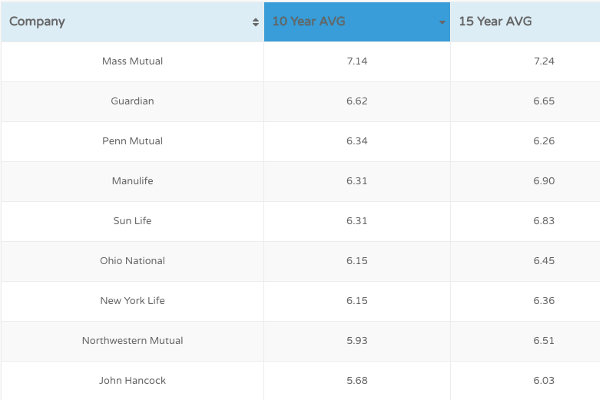Life insurance isn't a top priority for most Americans before reaching middle age. According to Forbes, adults between the ages of 38 and 53 have a 43 percent coverage shortfall in their life insurance policies.
But life insurance gives your family much-needed financial protection. Check out this comprehensive guide to understanding life insurance in your 40s.
Navigating Life Insurance in Your 40's
Life insurance is a tricky concept. If you're in good health and have substantial retirement savings, you might wonder why it's even necessary to shell out extra cash every month for a policy you may never use.
But insurance isn't for the best-case scenario. Life insurance protection is for the worst-case, unimaginable scenario that leaves your spouse exposed to life-changing financial debt.
Does this mean it's too late to get life insurance? No, it's the perfect time to get life insurance, especially if you've already got retirement accounts and a wealth management strategy in place.
Your life insurance options at 40 will vary based on your income. There are perks to choosing higher premium policies and perks for choosing low-cost policies.
If you choose the right type of policy, your family will always be covered no matter whether you die at 41 or 120 years old. Every family is different, and the best way to decide on the policy you need is first to set your own goals.
Types of Life Insurance
When you start the process of getting a life insurance quote, it's easy to get overwhelmed by the dozens of policy names, riders, and medical exam requirements. To help you get started, take a look at this list of the most common life insurance products.
Whole Life/Permanent
Whole life or permanent life insurance is a policy that pays a death benefit for your entire lifetime. So, for example, you could live to be 100, and your policy would still pay out at the same amount as long as premium payments were maintained.
Life insurance is more expensive to providers once you reach a certain age. To offset the cost, insurers could increase your policy each year, but most decide to start the policy off at a higher premium and keep the amount the same throughout the policy.
This makes whole life insurance payments two to three times more expensive than term life insurance. Another significant difference between whole life and term life insurance is the savings and investment options.
You can choose from universal life insurance and variable life insurance products when choosing your whole life.
Universal Life
If you choose a universal life insurance option, you benefit from investment savings and lower premiums than traditional whole life policies. Many universal life policies also include a flexible premium option.
There are two parts to a universal life insurance policy. The first is the cost of insurance (COI), and the other is the policy's cash value. The cash value is the amount you pay beyond the minimum to keep the account active.
Life insurance companies might invest the cash value or pay interest on the balance depending on the type of policy. The benefit of a universal life policy is the option to borrow money from your policy as cash accumulates.
Variable Life
Every variable life insurance policy has three main components: death benefit, cash value, and premium. Each time you pay on a variable insurance policy, a portion goes toward keeping your death benefit in place, and the remainder goes towards a cash value.
You can invest the cash value into sub-accounts that resemble mutual funds. Variable policies are different from universal life policies in that they allow you to choose the investments you want to make.
Term Life
Term life insurance is the simplest type of insurance. You pay a flat fee each month to receive a specific coverage amount over a certain period.
There's no option to use the life insurance policy to invest or borrow its cash value. However, some policies offer a Return on Premium, which means you get your premium payments back at the end of the term if you don't use it.
But these policies come with a maze of more complicated stipulations than some people want to manage. Term life insurance is the easiest path forward if you're ready to start with a low-cost life insurance policy.
How Does Life Insurance Work?
Once you hit 40, your finances are usually tied to more than yourself. If you have a spouse or kids, you'll want a stress-free option to make sure they're covered financially in the event of death.
Life insurance is a contract between you and an insurer who promises to pay a certain sum to your family if you die. You agree to pay a monthly premium amount to cover the death benefit.
The amount of life insurance you can get varies from $10,000 to millions of dollars. The amount you need is based on your current income and the number of dependents. If you're single with few debts, you probably don't need a significant life insurance policy.
Rule Of Thumb
One rule of thumb when deciding how much coverage to get is to multiply your income by 10. Another formula suggests adding $100,000 per child to pay for college. The trouble with formulas like these is that they don't consider your other savings options.
Because people are now expected to live longer, the amount you need could be more significant if your goal is to replace your income after you die. Age 40 isn't technically middle age when your spouse still has 40-plus years of living expenses to pay.
By age 40, you may have already amassed a hefty retirement policy with added perks like the ability to borrow money on investment gains. Choose a coverage amount that covers your debts, future education expenses, funeral expenses, and remaining mortgage payments.
When you die, your beneficiary gets the life insurance payout. A beneficiary can be your spouse, children, or both. The insurance money can be used for anything the beneficiaries choose.
All the beneficiaries need is the life insurance company's name to file a claim after they die.
Are My Options Limited Because I'm 40?
Life insurance options do change as you get older. Do you have fewer policy options now that you're 40? The answer is complicated.
If you're in top health, you might qualify for a policy with no medical exam when you apply. But these no medical exam policies are usually limited in their coverage which means applying again for life insurance fairly soon.
Your options typically aren't limited by policy type until you're much older or have existing health conditions. Unfortunately, there are companies whose premiums become unaffordable once you have a lengthy medical history.
At 40, you can expect your body to start changing, which can mean more ailments and trips to the doctor. It's best to go ahead and choose a life insurance policy before getting hit with high premiums as you age.
Here's a list of life insurance companies that offer solid policy options for 40-year-olds:
State Farm
One of the top reasons to choose State Farm is its long-standing reputation in the insurance business. In addition, state Farm offers whole life, variable, and universal life policies.
It's also one of the few companies that offer a Return on Premium rider on term life insurance. These policies are available on 20 and 30-year term policies.
BrightHouse Financial
As of 2017, MetLife is now BrightHouse Financial. The company is one of the largest life insurance providers in the United States.
BrightHouse Financial offers hybrid life insurance policies that include long-term care benefits. This is an added protection against high healthcare costs later in life.
The company is known for its Premier Accumulator Universal Life policy. The policy grants you access to its cash value in just a few years of starting a new policy which is unusual for accounts in this category.
MassMutual
MassMutual is one of the largest insurers in the U.S. and pays billions in dividends to policyholders each year. The life insurance company offers term life, whole life, universal life, and variable life insurance.
All MassMutual policies require medical exams through the company's representatives. There is an option to apply for a Direct Term Life insurance policy online for instant coverage, but you still need to complete a medical exam within 90 days.
MassMutual is known for the dividends it consistently pays whole life insurance policyholders. The dividends you earn can be redeemed for cash, used to pay your premium, or used to upgrade your coverage.
Life Insurance at 40
Life insurance in your 40s isn't difficult to find, but it is more complicated to choose. The policy that makes sense for your family varies based on the number of children you have and your annual household income.
You want your premium payment to fit comfortably within your family budget each month. If the payments are too high, you could lapse on your policy at a time when you need it most.
If you're ready to start your life insurance journey, click here to get quotes from the top life insurance providers today.




